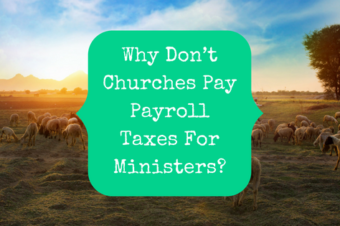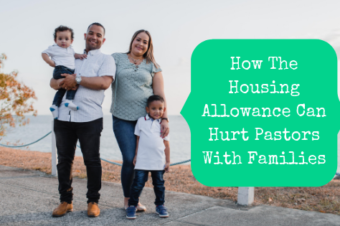
Growing up, there was one thing that I was always confused about. I would hear people mention April 15 as tax day, but it never made sense to me. You see, in my house, October was tax season. And that’s about as far away from April 15 as you can get.
My dad was a self-employed entrepreneur who was always behind on his “office work.” As such, he would file an extension for his tax return every year. You see, the IRS automatically extends the tax return deadline by six months for anyone who takes the time to fill out Form 4868 correctly.
It turns out that my dad was in good company. More than 10 million taxpayers file for extensions every single year. Are you one of them? Did you file for an extension and are now scrambling to prepare your 2018 tax return?
I’m here to help!
Here are 15 things that you should be aware of as you file your 2018 taxes:
The Forms Are Completely Different
Thanks to the 2017 Tax Cuts & Jobs Act, your tax return is going to look completely different this year. Form 1040 is shorter and there are a handful of new schedules to make up for what was removed. You can see examples and read more about the changes here.
Forms 1040A And 1040 EZ Are Gone
In addition to shortening the original Form 1040, the new tax law completely got rid of its spin-off forms, Form 1040A and 1040EZ. So, if you were in the habit of using those forms, it’s back to the old 1040 for you.
You Still Have Dual Status
If you meet the IRS’s definition of a minister, regardless of your actual job title, you are a dual status taxpayer. This isn’t new, it’s been this way for a long time. However, it is important to understand in order to file and pay your taxes properly. If this is news to you, or you still don’t really understand it, this article explains it in much more detail.
The Standard Deduction Nearly Doubled
One of the most popular and loudly trumpeted changes in the new tax law relates to the standard deduction. It has nearly doubled from 2017 to 2018. That means that if you usually take the standard deduction, you’re in luck, and if you usually itemize, you might end up taking the standard deduction this year. These are the standard deduction amounts for tax years 2017 and 2018 (it increased again by a little bit for 2019):
| 2017 Tax Year | 2018 Tax Year | |
| Married, Filing Jointly | $13,000 | $24,000 |
| Head of Household | $9,550 | $18,000 |
| Single | $6,500 | $12,000 |
Personal Exemptions Are Gone
While all of the politicians like to talk about the higher standard deduction, they conveniently forget to mention something that they removed to make up for it: personal exemptions. Personal exemptions allowed you to lower your taxable income based on the number of people in your family. You may remember checking little boxes on the front of Form 1040 and then adding them up.
In 2017, each personal exemption was worth $4,050. So, a family of four would be able to automatically lower their taxable income by $16,200. That is now gone, there is only the standard deduction mentioned above. Now, do you see why none of the politicians talk about this part of the law?
You Still Have To Pay The Obamacare Penalty
The “shared responsibility payment,” also known as the Obamacare penalty, is still in force for your 2018 taxes. If you did not have qualifying health insurance coverage or an approved exemption in 2018, you will have to pay for it.
That will be the last year, though. For 2019 and beyond, there will be no penalty for not having health insurance. There has been a lot of confusion and misinformation about this because the change comes a year later than all of the other tax law changes. All you need to know, though, is that for 2018, the penalty is still in force.
You May Be Eligible For The 20% Qualified Business Income Deduction
Another thing that is brand new for 2018 is the 20% Qualified Business Income deduction. This is a way for people who file a Schedule C to lower their taxable income. If you use Schedule C, you may be able to benefit from it as well, even if you’re just a pastor and not traditionally self-employed. You can read all about it here.
The Moving Expense Deduction Is Gone
You can no longer deduct your moving expenses on your tax return. If you’re a part of a denomination that moves their pastors every several years, this one could hit you hard. I’m sorry. Just know that when you can’t find where to deduct your moving expenses on Schedule A, that’s because it’s gone.
You Can No Longer Deduct Unreimbursed Business Expenses
Similar to the last point, you can no longer deduct unreimbursed business expenses, either. This one affects a lot of pastors since it’s common for you to pick up the tab, knowing that the church doesn’t have a lot of money. Unfortunately, you can’t deduct those expenses anymore. If this affects you, you may want to look into having your church start an accountable reimbursement plan, which you can learn about here.
Standard Business Mileage Rate
While you can’t deduct your miles on Schedule A anymore, you may still use that information in other areas of your taxes. The IRS’s standard business mileage rate has gone up from 53.5 to 54.5 cents per mile for 2018 and is 14 cents per mile driven in service of charitable organizations.
There Are New Tax Brackets
Another thing that has changed for 2018 are the tax brackets. For most people, they are lower, though there are a few places where they have actually increased. You can see the numbers and read all about them here.
The Child Tax Credit Amount & Eligibility Are Both Higher
Here’s some more good news for those of us with kids; the child tax credit is higher and more people are eligible for it. The credit has doubled from $1,000 to $2,000 per qualifying child and up to $1,400 of it is refundable. Refundable means that they give you the money even if you don’t pay any taxes. This is a really nice break for all of the parents out there.
Your Housing Allowance Could Affect Your Child Tax Credit
The amount of child tax credit you are eligible for is affected by your taxable income. Pastors are able to lower their taxable income with the clergy housing allowance. This means that for some pastors, their housing allowance could actually harm their ability to receive a child tax credit. If you have kids, you need to read about this here.
Most People’s Withholdings Were Off
A lot of people were surprised to end up owing taxes in April. They were upset because they expected their taxes to go down. The truth is, even though the taxes went down, their employers didn’t withhold enough during the year, so they ended up owing. Remember, whether you owe taxes or get a refund when you file has more to do with your withholdings than the actual taxes you pay.
Because there were so many changes in the law, it was difficult to estimate withholdings accurately. So, expect to be surprised when you fill out your tax return and then adjust your withholdings appropriately.
The Housing Allowance Is Safe… For Now
Finally, the biggest thing on every pastor’s mind, the housing allowance. As of right now, there are no changes whatsoever to the clergy housing allowance. The new tax bill didn’t touch it. And the court case where it was ruled unconstitutional was overturned. So, you still have that benefit. At least for now. I’m sure there will be more challenges to it in the future.
There you have it, everything you need to know to file your 2018 taxes. You only have 1 week left, so get to work!



